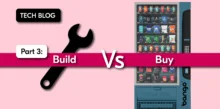CTIA shows change as mobile market goes mass market
by Sukey Miller

Three months and three big shows later and something is rotten in the state of Florida. Having just returned from what used to be one of the biggest US mobile shows, CTIA, it is clearer than ever that the mobile market has changed. Comparing CTIA in Orlando last week with Mobile World Congress in Barcelona last month and CES in Las Vegas in January confirms mobile’s continuing shift to mainstream, with buzz and innovation moving further from mobile operators towards device manufacturers, media companies and developers. In one sense operators dominated show talk, due to AT&T’s announced intent to acquire T-Mobile and the consequent chatter about further potential carrier consolidation.
I attended my first CES around 8 years ago, back in my IP TV days when it was all about TV’s that did not require the viewer to wear glasses, HiFi separates that required shiny silver disks and pumped-up supercars full of bass-bins and neon under-lights. Back then it was hard to find anything about mobile at the show, but in the last two years all that has changed. While TV still makes up a big slice of the show there was far more mobile content than I expected to see and my meeting schedule was packed with all the mobile folks in town. There were mobile phones and tablets everywhere – controlling music systems and TVs, doing the navigation in cars and showing HD movies on those big TVs.
In comparison, my experience of MWC across the last 5 years has seen a show that declined badly before bouncing back with vigor in the last two years. As mobile content changes and becomes more mainstream MWC has adapted well and focused attention on the vibrant new development community with its App Planet area. This year’s show received a further boost with the support of the big, buzzy and very green Android booth.
BlackBerry was far more visible at MWC with a large app focused presence. Even Palm, one of the US mobile innovators, ponied-up for MWC to show off new devices. Neither turned-up for CTIA.
Unfortunately, I could not see any similar innovation, evolution or reinvention from CTIA last week – it appeared to be the same old format, only smaller. I first attended CTIA five years ago in Las Vegas, where Bango exhibited. The show had a buzz about it with large booths taking over both the north and central halls of the Convention Center. Compare that to last week’s show and it is not hard to see that something has changed. Even those that say that Spring CTIA has always been more of a mobile infrastructure show could not help notice the change – my annual count of cell masts on show only reached 3, and not one of them was shaped like a palm tree.
On the news front, there was the usual round of US specific devices looking a lot like those launched at MWC or CES – many with 4G stuck after the name, like the Nexus S 4G. Samsung unveiled the Galaxy Tab 8.9 which, along with their MWC announced but yet to be launched 10.1 Tab, had immediately been put on a post-iPad2 diet. Not to be outdone by LG, HTC was showing their Evo 3D, although it was kept firmly in its display case, which was a shame given the promise of a 3D screen with retina display resolution – could this hint to a future iPhone 3D?
During all the usual meetings and parties I heard stories of SendMe acquiring Thumbplay’s remaining business, which further consolidates the traditional mobile content market as phones continue to evolve into mainstream media players. But the most intriguing story was from a developer (using Bango Analytics in-app and on their website) who told me that they were seeing a large swing in mobile content consumption away from their dedicated apps and back onto their mobile website. Could this signal the beginning of the end for apps displaying web content when the browser is actually better at the job?
So what is to become of the spring CTIA show? It may have been that many of the mobile community did not want to travel all the way to Orlando; after all, the last show there did not set the world on fire. But I suspect that with the mainstream growth in mobile and the shift from network to device as demonstrated at CES, along with the resurgence of MWC through its focus on developers, content and apps that the spring CTIA is one event too many. Perhaps it is time for CTIA to focus on their fall show and place more emphasis on developers, internet, apps, entertainment, payments, NFC, gaming and tablets. Make it THE place for the industry to show off pre-holiday season products. Oh, and stick to the west coast – make it easy for all the folks from Apple, Google, Microsoft and Palm to stop by for the day.
![]()
Subscribe to our newsletter
Get the latest subscription bundling news and insights delivered straight to your inbox.




